Part 1 Index: Etymological & Teutonic Sources
- Derivation of the Surname RAMSDALE
- Etymology
- Teutonic Sources
- Viking Influence
- Danish or Norwegian Origin ?
- Topographical and Toponymic (habitation) Surnames
- Heraldry
- Notes
- Møre og Romsdal, Norway
- Romsdal to Ramsdale
Part 2 Index: Locative Sources
- Ramsdale Hamlet, Fylingdale's Parish, North Yorkshire
- Ramsdale Megalithic Standing Stones, North Yorkshire
- Ramsdale Valley, Scarborough, North Yorkshire
- Ramsdale & Ramsdell Chapelries, Hampshire
- Lilla Howe Bronze Age Barrow, North Yorkshire
- Cuerdale Hoard, Preston, Lancashire
- Wade's Causeway, North Yorkshire
Part 3 Index: Danish or Norwegian Origin
- Danish or Norwegian Origin (published sources)
- Danish or Norwegian Origin (table of place-names)
- Viking Society Web Publications
- Molde Wind Roses [THIS PAGE]
- "On dalr and holmr in the place-names of Britain", Dr. Gillian Fellows-Jensen
- The Place-Names of the North Riding of Yorkshire (1979) A. H. Smith
Part 4 Index: General
- Fylingdales: Geographical and Historical Information (1890), Transcript of the entry for the Post Office, Professions and Trades in Bulmer's Directory of 1890
- Fylingdales Parish: Victoria County History (1923) A History of the County of York North Riding Volume 2, Pages 534 to 537
- Ramsdale Mill, Robin Hood's Bay, Yorkshire - Postcard Views (circa 1917 to 1958)
- Ramsdale Valley, Scarborough, North Yorkshire: Edwardian Postcards (1901 to 1915)
- Scarborough, North Yorkshire: Bulmer's History and Directory of North Yorkshire (1890)
- Ramsdale Megalithic Standing Stones, Bronze Age Stone Circle, Fylingdales Moor, North Yorkshire
- Robin Hood's Bay - published articles regarding its origin
- Ramsdale Family Register - Home Page
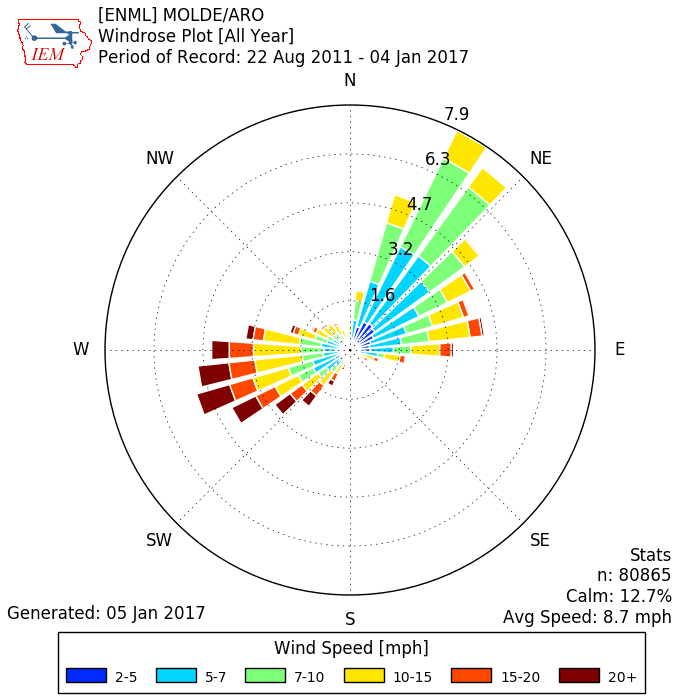
Molde wind rose (annual plot)
Presented in a circular format, the modern wind rose shows the frequency of winds blowing from particular directions over a specified period. The length of each "spoke" around the circle is related to the frequency with which the wind blows from a particular direction per unit time. Each concentric circle represents a different frequency, emanating from zero at the center to increasing frequencies at the outer circles. A wind rose plot may contain additional information, in that each spoke is broken down into color-coded bands that show wind speed ranges. Wind roses typically use 16 cardinal directions, such as north (N), NNE, NE, etc., although the following monthly wind roses use only eight - N (0°), NE (45°), E (90°), SE (135°), S (180°), SW (225°), W (270°) and NW (325°).
A wind rose can quickly indicate the dominant wind directions and the direction of strongest wind speeds and the following annual plot and 12 monthly wind roses for Molde indicate:
- frequencies of wind direction and wind speed at Molde (at the mouth of the Romsdalsfjord) over the period August 2011 to January 2017; and
- the most and least favourable months in which to sail to and from Molde (Møre og Romsdal, Norway) and Whitby (North Yorkshire).
See below (i) Molde wind rose (annual plot - August 2011 to January 2017), and (ii) Molde monthly wind roses.
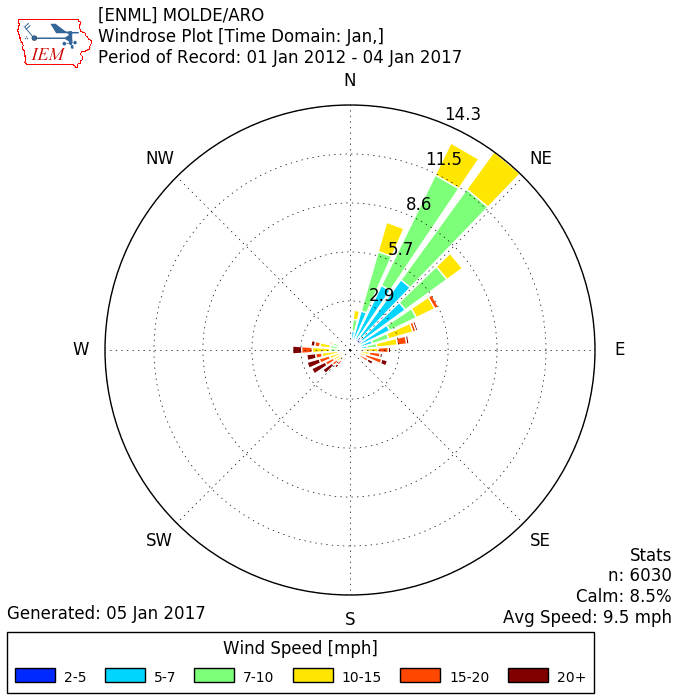
Molde wind rose (January)
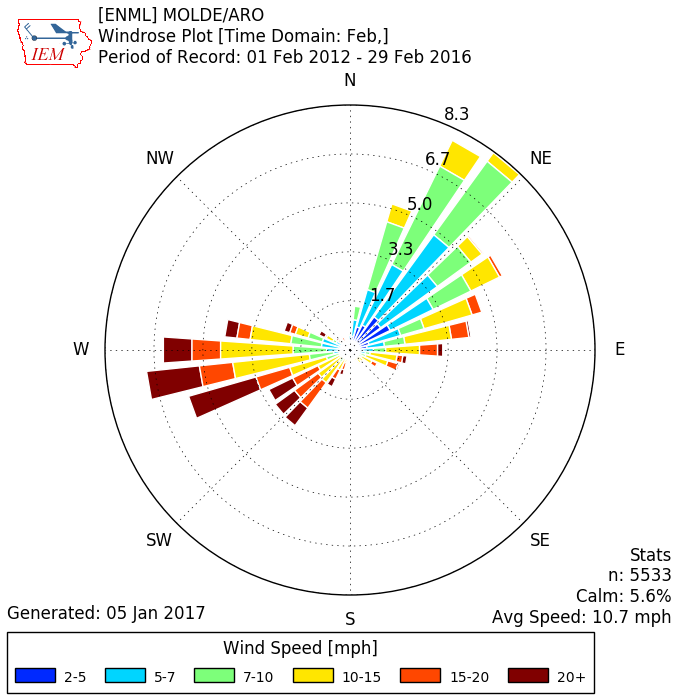
Molde wind rose (February)
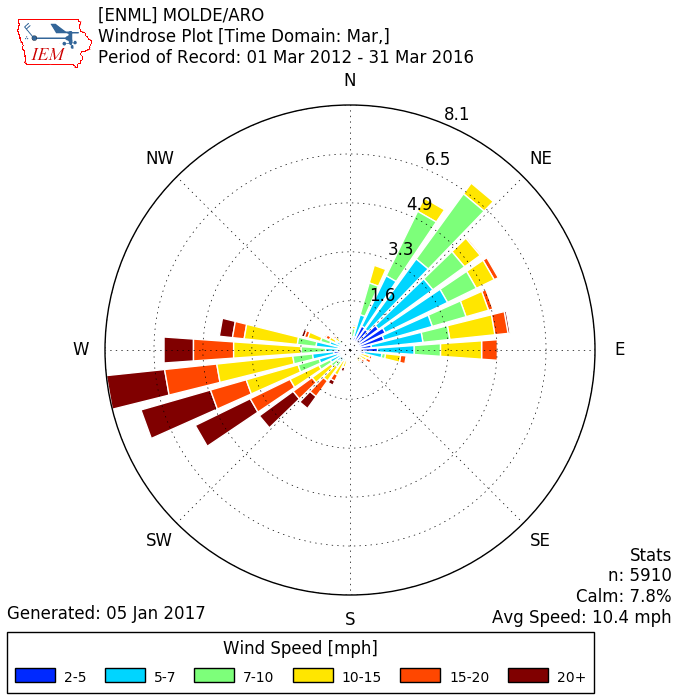
Molde wind rose (March)
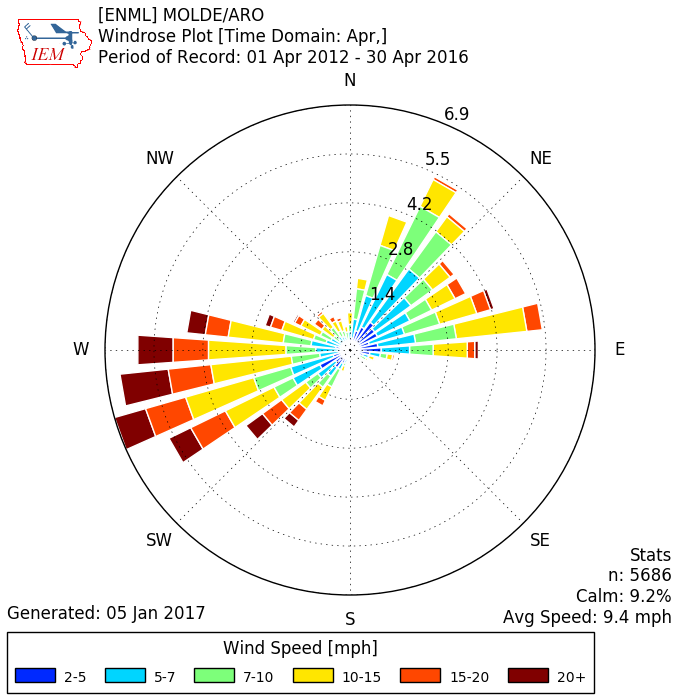
Molde wind rose (April)
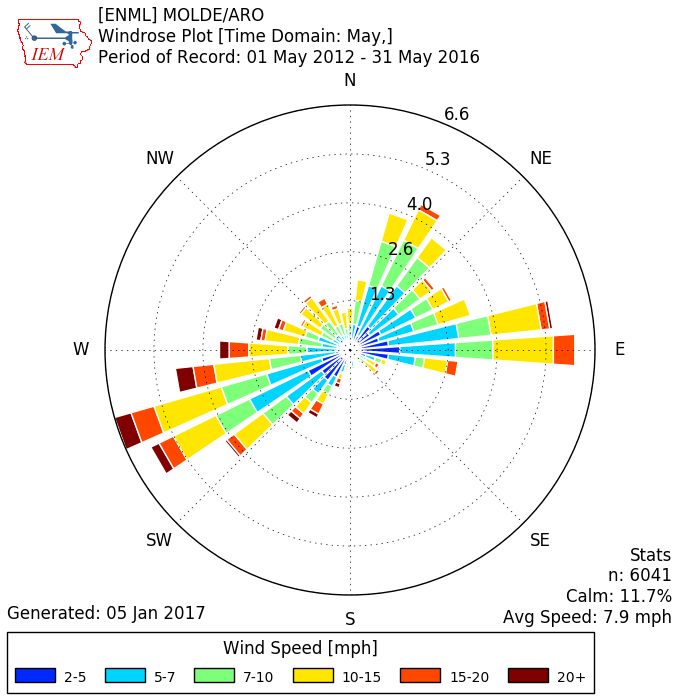
Molde wind rose (May)
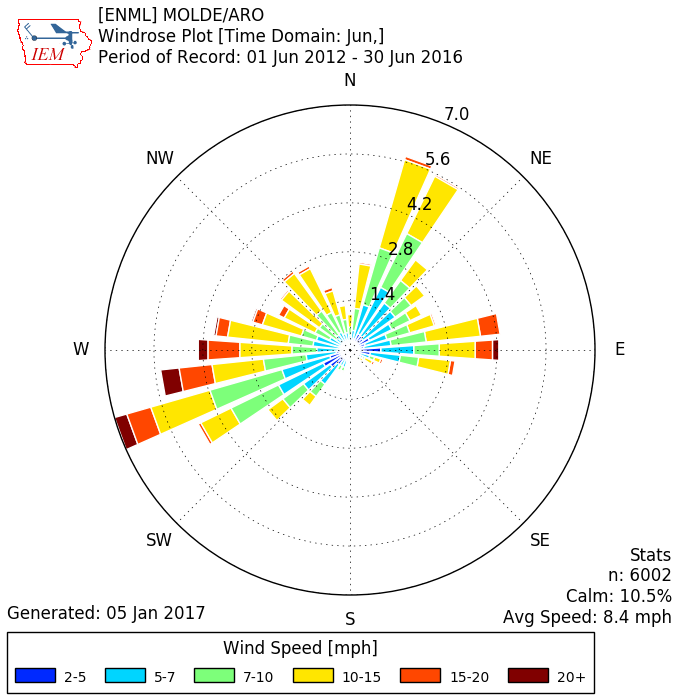
Molde wind rose (June)
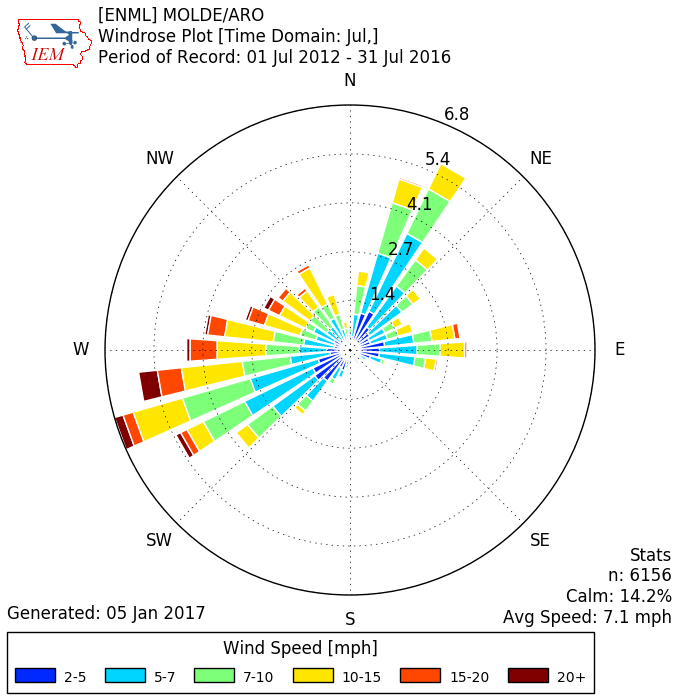
Molde wind rose (July)
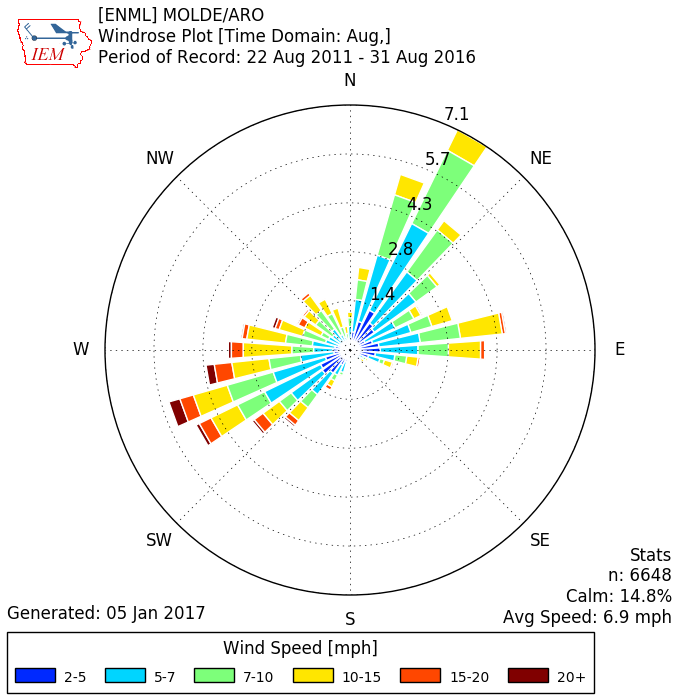
Molde wind rose (August)
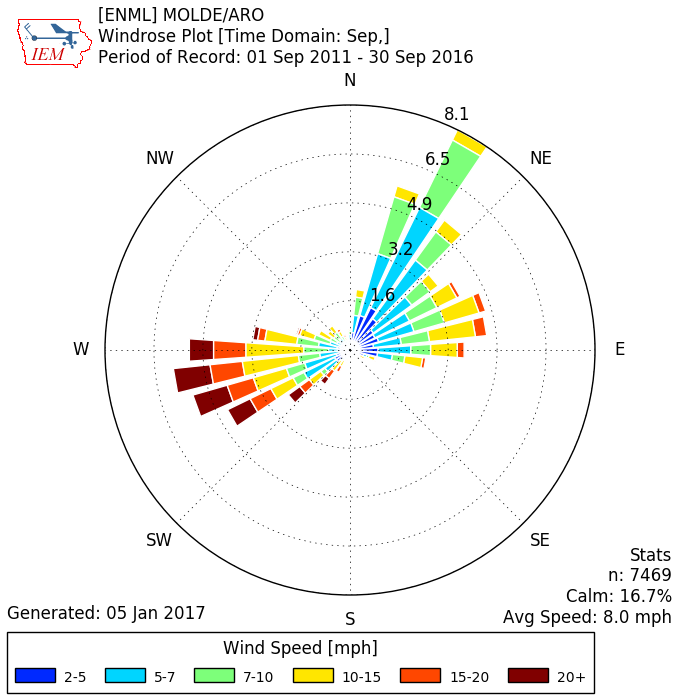
Molde wind rose (September)
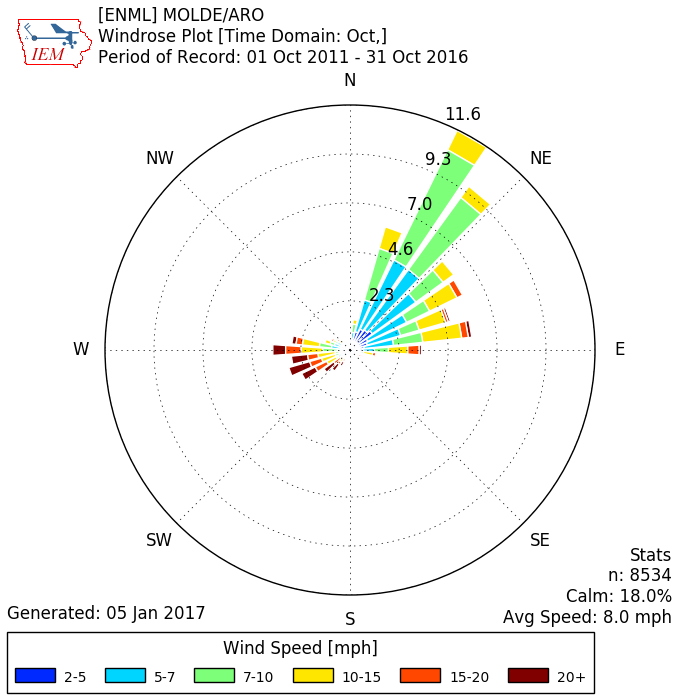
Molde wind rose (October)
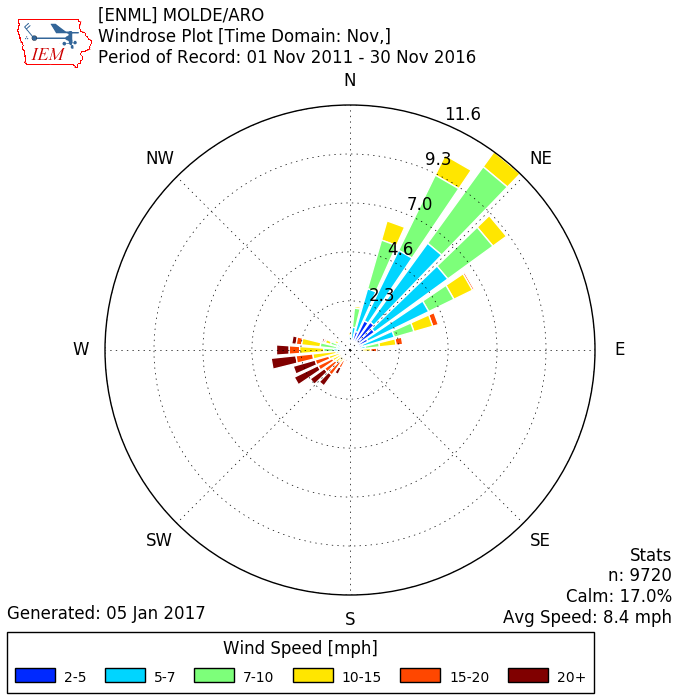
Molde wind rose (November)

Molde wind rose (December)
"The Norse Settlement of North Scotland in its Geographical Setting" (1934-6) Andrew C. Odell Saga Book of the Viking Society Vol. XI at pages 256 to 259
… The first Norse immigrants to Scotland, as has been shown by the work of the Faroese philologist Jakobsen, were peasant immigrants of the eighth century from Agder and Rogaland. That they came from the Möre and Agder districts of S.W. Norway is shown by the distribution of "setr" and "land" place names in that part of Norway - which root is common in the north of Scotland.
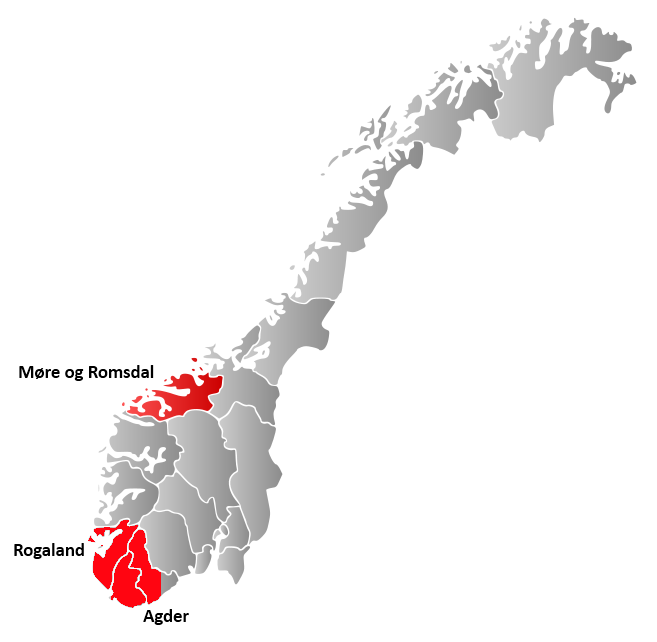
These peasant immigrants were succeeded, at the period of consolidation in power of Harold the Fairhaired, by a set of adventurers. The Shetland Islands have been proved by Brøgger to have been later settled than most southerly regions by the Norse. The peasants married with the aborigines, it was not as so often imagined an extermination settlement, but one of peaceful penetration, and probably in time they brought the thrall women from Norway, who were also dark, and this perpetuated the dark strain in the Shetland Islands.
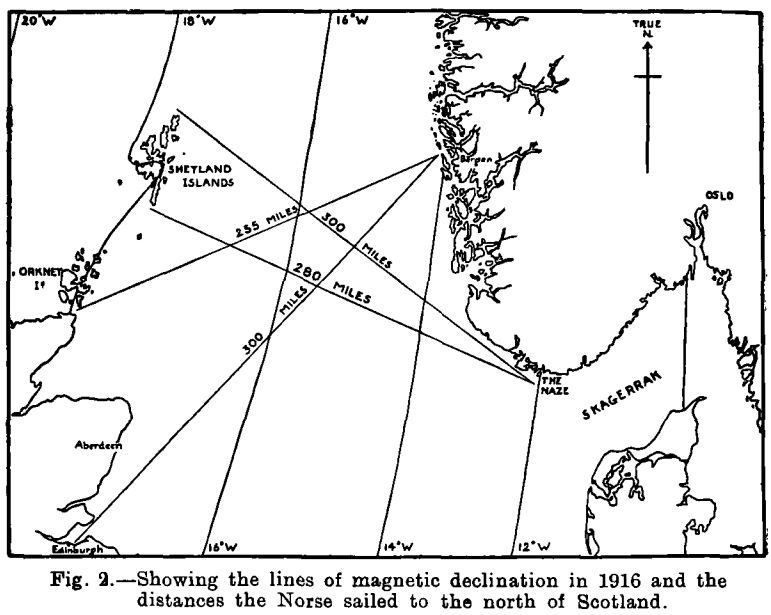
To reach the north of Scotland the Norse had nearly three hundred miles to sail across the North Sea, in the main against prevailing winds. The shortest distance is from Bergen to Caithness and this may account for the focusing of Norse penetration on that point of the seaboard, apart from its nodal character for passing down the west or eastern seaboards.
The third diagram shows the prevailing winds for May and September. The upper figure for May shows that, when the crops were sown, there is a marked north and easterly component for the average winds which, making the assumption that they have not appreciably changed since Norse times, would allow a more easy seasonal passage to the west.
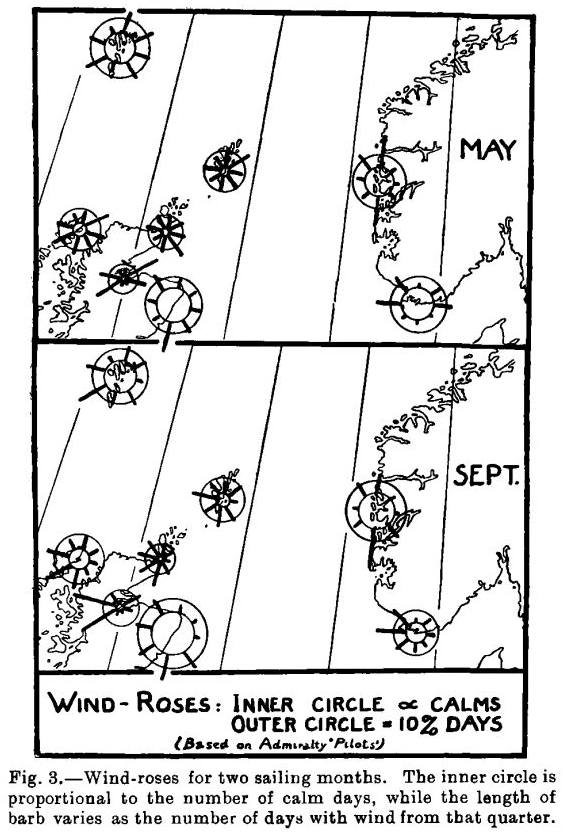 |
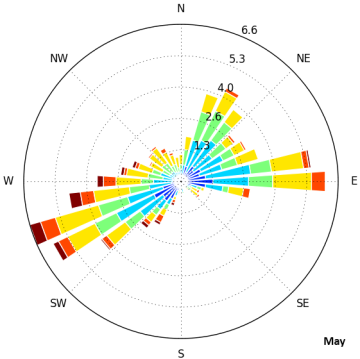 |
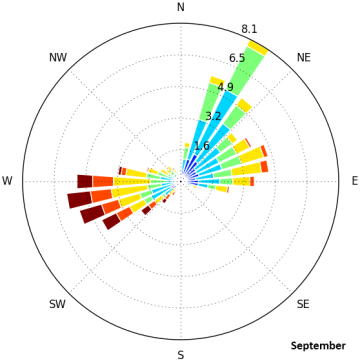 |
The Norse landed on the seaboard, and if they were on a marauding expedition failed to have any deep influence on the settlement, but even if they came as settlers it is noteworthy that they failed to go far into the interior. A study of the place names of a parish as that of Farr in Sutherland shows that the Norse did not settle a great distance inland, and the clean cut line between the two types of names in Strath Naver shows that it was a peaceful occupation of the land. The settlement seems to have been discontinuous, based as it was on a command of the sea.
… To conclude, the Norse settlement of the north of Scotland took place when the Viking ships were able to navigate the northern waters, and the peoples who crossed left an impression on the place names of the region which still persists to the present …